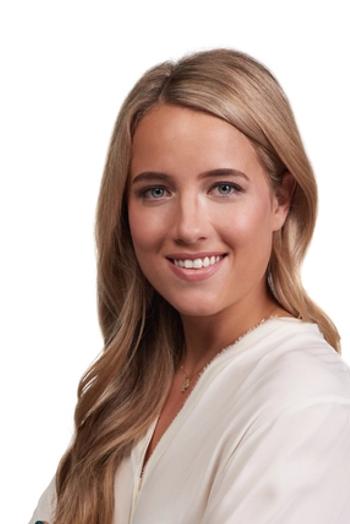
2009 Fee Schedule Survey: Survive the Perfect Storm
A lingering recession and declining reimbursement make for stormy weather for practices. Check out our suggestions for how to stay dry - and in the black.
In harsh economic times that test doctors’ souls, Buffalo family physician Raul Vazquez performs a lot of tests.
Spirometry. Nerve conduction studies. EKGs. Stress tests. Ultrasound imaging to detect peripheral arterial disease.
For Vazquez, these so-called ancillary services are in fact essential to the financial well-being of his practice. With payment from private health insurers for evaluation and management services continuing to shrink - as evidenced by our 2009 Physician Fee Schedule Survey - physicians like Vazquez can’t get by with old-fashioned primary-care medicine. Merely sitting down with a patient, diagnosing his illness, and writing a prescription won’t cut it anymore. “If you just see patients, you might as well close up,” says Vazquez.
Faced with enrollment declines and dismal investment returns, insurance companies in 2009 accelerated their now-customary pay cuts, according to our latest fee schedule survey. For bread-and-butter office visits for new patients, established patients, and consults, reimbursement declined an average 7.3 percent, our data reveal, and the bellwether 99213 - the most frequently billed code - fell 8.6 percent to $65.49. (Our analysis assumes that physicians reported private-pay allowables - the rate physicians contract for, which typically includes money collected from the patient - as opposed to dollar amounts on the insurance checks they receive.)
Private health plans have been tight-fisted for years, but the gloomy economy only tightened their grip in 2009. When employers lay off workers, enrollment drops in company-sponsored health plans, which means lower premium revenue. And a moribund stock market in 2008 meant that insurers also earned less on their investments. So they try to preserve their profit margins by paying doctors less, says Susanne Madden, president of The Verden Group, a consulting group focused on managed care.
“Payers are cost-shifting to physicians,” says Madden. “By putting downward pressure on physician reimbursement, they don’t have to bump up their premiums as much to maintain their profitability.”
But who’s worrying about physician profitability? Well, you are. And so are we. The skies are gloomy and the rain is falling for private-office physicians; our 2009 Fee Schedule Survey is not exactly forecasting picnic weather. Still, there are some things you can do to get some cover.
The newly ‘generous’ Medicare
Our data reveal a pattern of private-payer reimbursement that’s declining steeply enough to make Medicare’s relatively low-but-stable pay rates look pretty good by comparison.
In 2009, the federal program bumped up its rates for office visits 99213, 99214, and 99215 by 2.5 percent, 2.7 percent, and 2.7 percent, respectively. Reimbursement remained essentially flat for 99212 while falling 5.3 percent for the so-called nursing code of 99211.
All in all, the feds are trying to bolster primary-care doctors who depend heavily on these E&M codes, says Max Reiboldt, CEO of The Coker Group, an Atlanta-based consulting firm.
While private payers have pushed their rates down, Medicare has pushed its rates up. The result? The federal program that used to be a reimbursement floor that everyone built on - “We’ll pay you 120 percent of the Medicare fee schedule” - is becoming the ceiling. In 2008, private plans outpaid Medicare for all levels of established-patient office visits except 99215. In 2009, private payers fell below Medicare on 99214 as well, and the gap between Medicare and private payers on the other codes shrank. In 2008, the average allowable from private payers for 99213 was 120 percent of Medicare. In 2009, it slipped to 107 percent. If this trend keeps up, you’ll be lucky if payers say, “We’ll pay you as much as Medicare.”
This trend is becoming a talking point for doctors who favor a single-payer healthcare system. “Medicare for all is not a bad concept,” says Vazquez. Adds Madden, “Reimbursement rates explain why so many physicians support a public option. In adult primary care, Medicare is often the better payer.”
And the Medicare edge isn’t just about dollars. Physicians experience fewer hassles dealing with Medicare since its payment rules are clearer and applied more consistently, says Madden. Plus, the agency doesn’t rewrite the rules as frequently and capriciously as do some private payers.
The average charge for office visits for new patients, established patients, and consults decreased by almost 8 percent. Physicians primarily cut their prices for new-patient and consult visits.
It might seem academic, since the amount you charge isn’t the same as the amount you’re paid - and you’re only in direct control of the former - but reducing charges is a bad move, Madden says.
Charges should be based on your costs, including physician compensation, she argues. “At the very least, you need to increase your charges each year to reflect inflation.”
It’s not clear why charges dropped in 2009. One possible explanation is physician sympathy for patients who must foot the entire bill, either because they have a high-deductible insurance plan or else lack coverage altogether. That’s no way to run a business, says Madden.
“If patients are struggling to pay what they owe, physicians can always write off part of the bill, as long as they document that it’s a hardship case,” says Madden. “But they shouldn’t move their charges downward across the board to help patients.” Payers might reasonably assume in such cases that the lower charge is your “usual and customary fee,” and seek discounts against that number.
No safe place
Private payers are consistent if nothing else. In 2009, they cut reimbursement for every level of the office-visit sets for new patients, established patients, and consults. In addition, reimbursements on average declined in every region of the country, with the steepest drop in the Mid-Atlantic states, where E&M rates are now the nation’s lowest. A 99213 there came to $58.30. The least-drastic cuts occurred in the Pacific region, which also boasted the highest rates - $73.10 for a 99213, for example.
Experts don’t know exactly what accounts for these geographic disparities, but they have theories. “In states like New Jersey and New York, you have a higher density of physicians, and the competition keeps reimbursement at a lower level,” says Madden. A larger number of physicians in one location means payers there can more easily play physicians against each other.
Census figures buttress Madden’s argument. Four of our Mid-Atlantic states - Maryland, New York, New Jersey, and Pennsylvania - rank among the nation’s 10 highest in physicians per capita. In contrast, California, Washington, and Oregon - the three largest states in the Pacific region, the others being Alaska and Hawaii - are in the second tier of 10.
For his part, Reiboldt wonders if the difference in rates reflects a greater prevalence of large-group practices in the Pacific region, which gives these doctors more negotiating clout. Doctors in the Mid-Atlantic region, he says, are more independent-minded and less likely to join a white-coated herd.
Dicing survey results by medical specialty reveals the usual lack of parity between primary-care physicians and their specialist colleagues. While all physicians took an E&M pay cut, the cuts weren’t as onerous for medical specialists (-4 percent) and surgical specialists (-3 percent) as they were for primary-care physicians (-9 percent). And overall, specialists received the highest rates. Since orthopedic surgeons, cardiologists, and the like are less plentiful than internists and family physicians, they may enjoy more bargaining power with insurers.
Declining reimbursements result from a trickle-down economy, with Wall Street trickling down problems on health insurers, and health insurers trickling down problems on doctors. In 2008, the nation’s Blue Cross Blue Shield companies experienced a 41 percent drop in net income, due in part to lower return on investments, according to a study by the credit-rating firm A.M. Best. This Blues song included publicly traded Wellpoint, which operates BCBS companies in 14 states. Its net income fell 25.5 percent in 2008.
These troubles persisted into 2009, with Wellpoint earnings tailing off by 76 percent in the second quarter and membership declining by 1 million from 12 months before, due mostly to higher unemployment. Among the ranks of other publicly traded health insurers, income also decreased for Aetna, Coventry Health Care, and HealthNet in the second quarter, but rose nicely for Humana, UnitedHealth Group and Cigna.
Still, all of the publicly traded insurers managed to post profits through the first half of 2009, and one way to stay in the black was to whittle down physicians’ fees. In addition, payers in 2009 may have been reducing their costs in anticipation that healthcare reform legislation would erode future profits, said Reiboldt. “It’s a matter of positioning themselves.”
How to deal
The health plans have their strategy for tough times. What about you? It may seem too tempting to throw up your hands in frustration, but there remain strategies for mitigating the effect of the negative economic forces on your practice:
Know your stuff. One essential skill is knowing what your health plan contracts actually say. Many practices don’t even recognize fee cuts when the plans enact them. “Some doctors are ignorant of what they’re paid,” says Denver-based practice-management consultant Todd Welter.
It’s your business. You don’t have the luxury any longer of leaving the “money stuff” to other people. But while payer contracts may be dense with arcana, understanding what you’re getting paid is not like memorizing the phone book, says Welter. Just track reimbursement for the 20 to 30 CPT codes that represent 90 percent of your revenue. If you notice that a new contract shaves dollars off your key codes, voice your objections to the provider relations representative, who may give in, says Welter. “They’re watching for the doctors who aren’t watching the details.”
Knowing your top codes cold is especially critical when health plans crow about new rates that are “on average” substantially higher than Medicare rates. Closer inspection of a private payer’s new fee schedule may reveal that the plan is lowering your 99213 to 105 percent of Medicare, but increasing some rarely used codes to 150 percent. Also beware of payers who freeze their rates by continuing to base them on last year’s Medicare fee schedule, instead of upgrading to this year’s.
Understand your value.Negotiating with payers that operate like virtual monopolies in many regions isn’t a cakewalk, but it’s worth trying. They’re more likely to give you a raise, or at least not give you a haircut, if you convince them that you’re more valuable to them than rival practices. Perhaps you’re the only one who offers extended office hours, or you hew more closely to clinical guidelines for a larger percentage of patients than most of your colleagues. If you’ve got it, flaunt it.
See more patients. If you can’t stave off rate decreases, you may be able to protect your bottom line through increased productivity. Maybe you can carve out another slot or two for office visits by tightly scheduling chats with pharmaceutical reps, or delegating more patient education to an RN or medical assistant. A consultant can help identify logjams in your patient flow, such as a shortage of exam rooms, which you might be able to correct by using your private office to handle patient visits.
Some practices lower costs by hiring nurse practitioners and physician assistants, who can do 80 percent of what a primary-care physician can do, including diagnose illnesses and prescribe medications, for less than half of what a physician earns. In 2008, for example, physician assistants specializing in primary care pulled down $87,649 in compensation and brought in $246,001 in revenue, according to the Medical Group Management Association. In comparison, a family physician not delivering babies earned $179,672 and produced $370,011 in revenue. So one family physician’s compensation would pay for two PAs, whose combined revenue of $492,002 would top the doctor’s by 33 percent.
Provide more services. Offering ancillary services such as spirometry, EKGs, and X-ray is a traditional way to supplement waning reimbursement for E&M services. But before you buy a piece of equipment, ask yourself a question - is this service benefiting your patients, or merely your bank account? “The temptation is to do it for every patient, whether they need it or not,” notes Madden. “That promotes overutilization.”
However, you’re on safer ethical ground if you currently refer patients to a local hospital for tests and procedures that you could bring in-house, says Todd Welter. “Somebody is making money off these services,” he says. “Why shouldn’t it be the doctor?” Just be sure to run the numbers for your new service ahead of time to determine whether it will actually turn a profit. How much will a test or service cost in terms of equipment, supplies, and personnel? What’s your likely volume of patients? Are you certain your payers will reimburse you for it? How much? Can you delegate the actual performance of the service to lower-paid staff, or will you have to perform it personally? How much of your time will it take - and are there more profitable ways you would (or could) be spending that time? Do the math.
Reinvention
Sometimes doing the math on third-party reimbursements - more about subtraction than addition - drives physicians to consider other employment arrangements or practice models. One idea is to sell: Hospitals are in a buying mood again, and Reiboldt says more and more physicians are becoming employed, which promises a reasonably good livelihood - but no overnight fortunes like those in the 1990s, when health systems overpaid for practices. Hospitals, he adds, have developed into more physician-friendly employers since they first started assembling regiments of MDs and DOs. However, they’ve also turned to productivity-based compensation formulas that keep physicians hustling like self-employed entrepreneurs.
Another drastic survival plan is cutting your ties to private health plans and Medicare, seeing patients on a cash-only basis. “We stopped contracting with them seven years ago due to declining reimbursement,” says internist Raymond Kordonowy, a member of the four-doctor Internal Medicine of Southwest Florida in Fort Myers. “Providers should bill what their practice requires to remain profitable.”
Whatever you do to counter the squeeze play of private payers, act boldly. You can’t be the doctor you were yesterday, circling 99213 on a charge ticket and waiting for a check. Says Raul Vazquez, “You have to reinvent yourself.”
*Curious to see how payer reimbursements are trending? Compare the 2009 survey stats to our 2008 Fee Schedule Survey.
Robert Lowes is an award-winning journalist who has covered the health-care industry for 20 years. He also is a published poet with an MFA in creative writing. He can be reached via physicianspractice@cmpmedica.com.
This article originally appeared in the January 2010 issue of Physicians Practice.
Newsletter
Optimize your practice with the Physicians Practice newsletter, offering management pearls, leadership tips, and business strategies tailored for practice administrators and physicians of any specialty.













